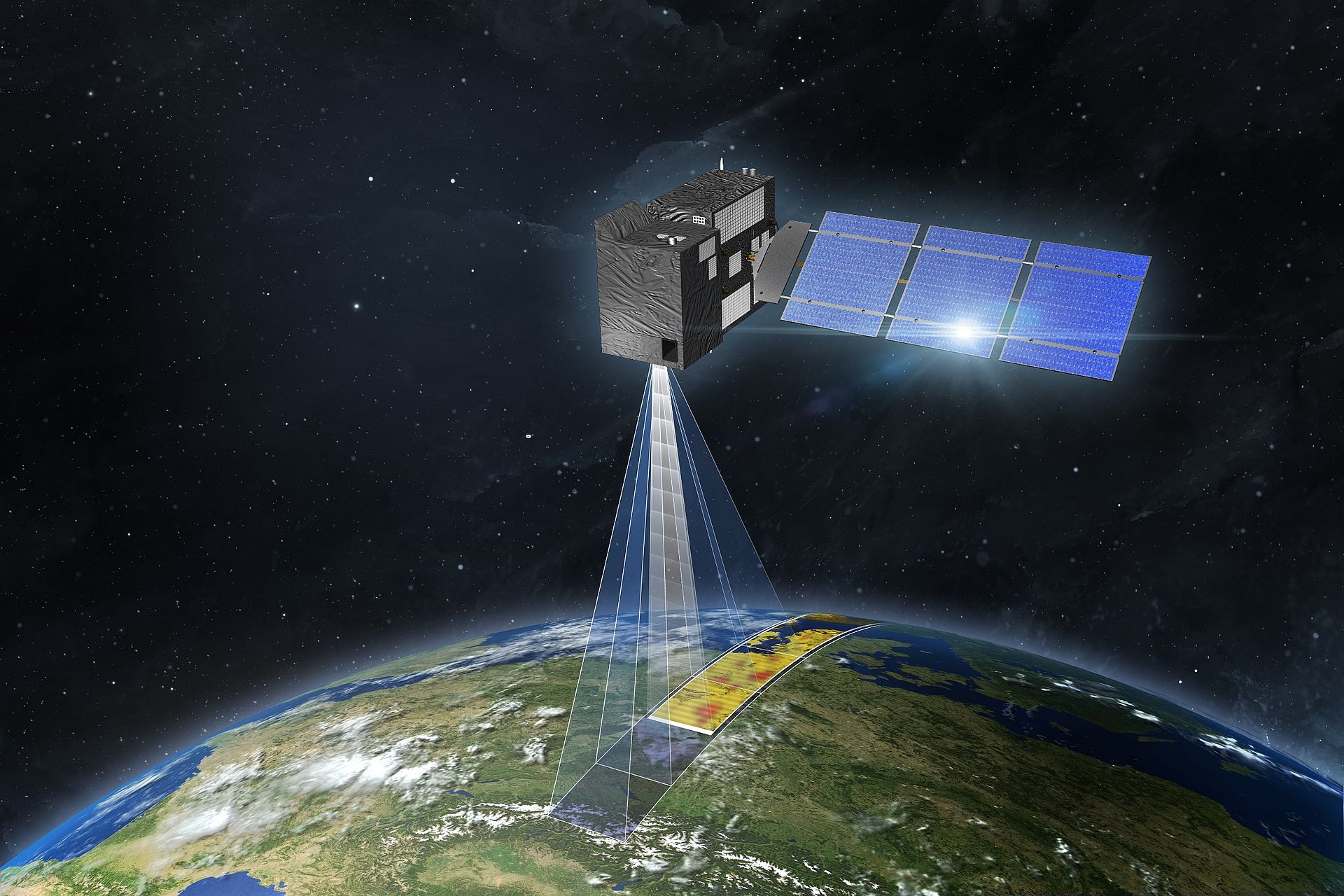It is one of the most important missions to combat climate change: the Copernicus CO2 Monitoring Mission (CO2M) aims to specifically measure the amount of climate-damaging gases that enter the atmosphere as a result of human activities. The data collected by the CO2M satellites will provide reliable information on the emissions of individual countries, regions and cities and thus also help to verify whether the goals of the Paris Agreement are met.
The European Copernicus programme
Copernicus is the second major European space programme alongside Galileo and provides an independent Earth observation infrastructure. All Copernicus missions are funded by the European Union and ESA. The data collected by measuring facilities on land, at sea, in the air and in space is primarily used for monitoring the environment and climate, but also helps to cope with natural disasters and provides answers to security-related questions.
For the sake of our planet
Using instruments that take measurements in the infrared wavelength range, the CO2M satellites will be able to measure the concentration of carbon dioxide, methane and nitrogen dioxide in the atmosphere very precisely. The data will then provide reliable information on the emissions of individual countries, regions and cities.
Launch in 2025
The CO2M project is being implemented by an industrial consortium led by OHB. As the prime contractor, OHB is responsible for the overall system and is developing the satellite platforms. A key partner is Thales Alenia Space as supplier of the payload. The almost two-tonne CO2M satellites are to be launched to their orbit at an altitude of 735 kilometres sequentially from the end of 2025 to be operational in 2026.

